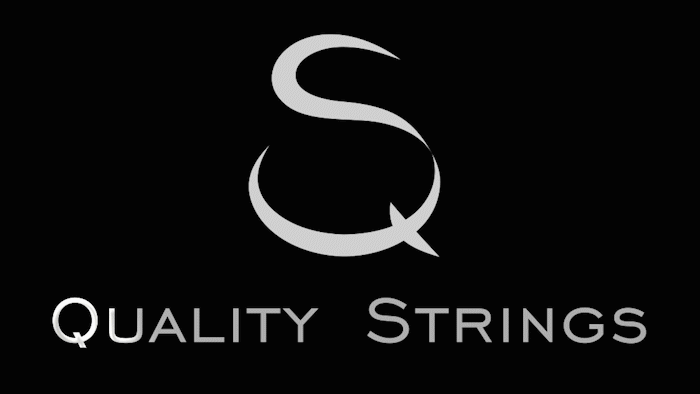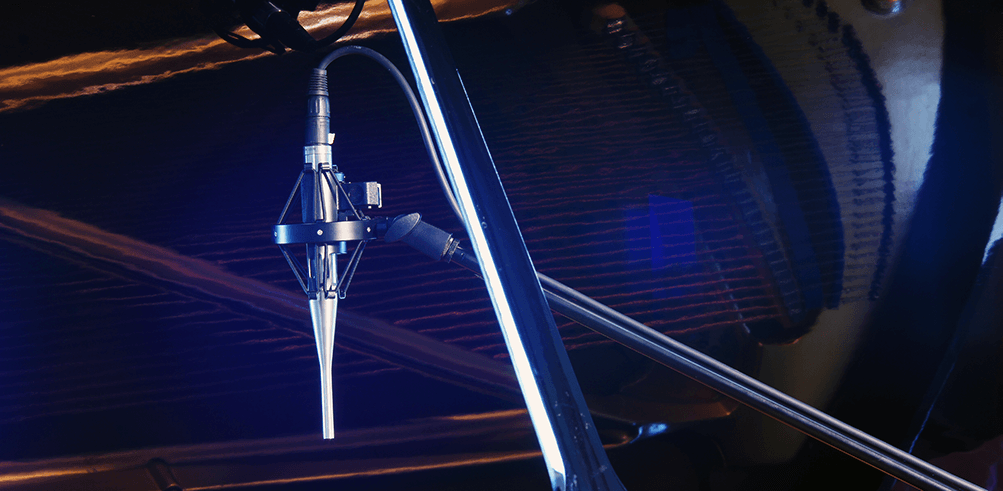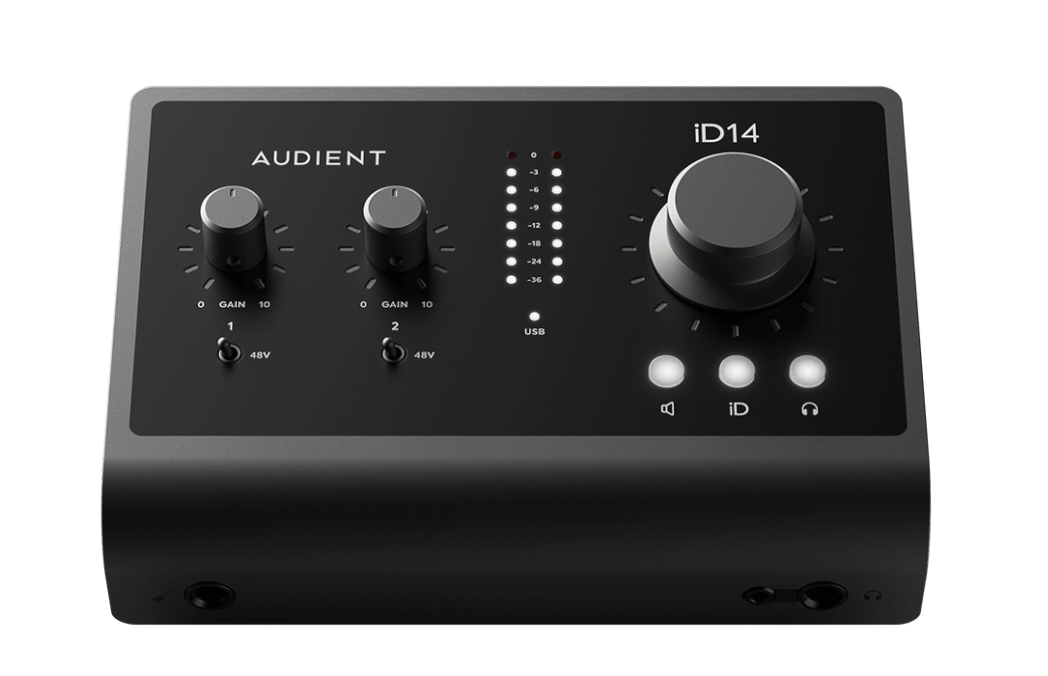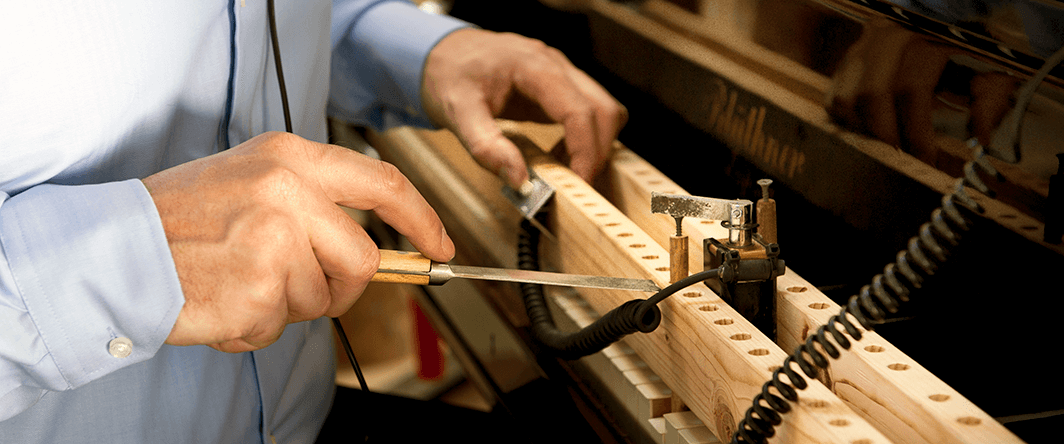Quality Strings designs and manufactures custom bass strings for upright and grand pianos
Additionally the plain wire unisons can be improved through rescaling
Our innovative method balances the strings and produces a homogeneous sound
Quality Strings researches and develops objective methods to analyze and optimize results
Objective analysis
While the subjective assessments of our customers and ourselves will always be paramount, we use objective measurement and analysis as a valuable addition to help improve our string design and production
Quality Strings researches and develops methods that enable reliable, valuable analysis
The equipment
Sound recordings are used as a basis for the analysis. To guarantee the best quality and resolution for these recordings, highly accurate measurement microphones and neutral recording equipment are essential
Microphone
The Earthworks M30 is a calibrated omnidirectional condenser microphone that is ideally suited for acoustic measurements. The microphone has a linear response from 5Hz - 30kHz, uniform omnidirectional pickup and excellent transient response. It comes with an electronic calibration file.
Go to info from the manufacturer
Audio Interface
The AUDIENT iD14 (MKII) offers two Audient Class-A console microphone preamps and features industry-leading AD-DA converters from Burr Brown. More than 95% of the minimal noise resides well below 15Hz. By applying a High Pass Filter with a Cut Off frequency of 20Hz, a clean, reliable and accurate recording signal is created.
Go to info from the manufacturer
The recording procedure
A standardized recording procedure is essential to enable us to properly compare different recordings. A wooden beam is mounted over the keys with a hole above each key. Then the underlying key is struck with a rod using an electromagnet to ensure a constant keystroke
photo Sanja Harris
Each tone is recorded separately, automatically trimmed and, if desired, a High Pass Filter is applied at 20Hz
This creates 88 recordings for each instrument and situation. These then form the source data for spectral analysis
The software
Spectral Analysis of Musical Sounds
A word of thanks goes to David M. Koenig. His book "Spectral Analysis of Musical Sounds - with the Emphasis on the Piano" published by Oxford University Press (ISBN 978-0-19-872290-8) is an excellent starting point for our analysis
Click here for more information about the book
This book addresses the analysis of musical sounds from the viewpoint of someone at the intersection between physicists, engineers, piano technicians, and musicians.
The study is structured into three parts. The reader is introduced to a variety of waves and a variety of ways of presenting, visualizing, and analyzing them in the first part. A tutorial on the tools used throughout the book accompanies this introduction. The mathematics behind the tools is left to the appendices. Part Two provides a graphical survey of the classical areas of acoustics that pertain to musical instruments: vibrating strings, bars, membranes, and plates. Part Three is devoted almost exclusively to the piano. Several two- and three-dimensional graphical tools are introduced to study various characteristics of pianos: individual notes and interactions among them, the missing fundamental, inharmonicity, tuning visualization, the different distribution of harmonic power for the various zones of the piano keyboard, and potential uses for quality control. These techniques are also briefly applied to other musical instruments studied in earlier parts of the book.
For physicists and engineers there are appendices to cover the mathematics lurking beneath the numerous graphs and a brief introduction to Matlab (R) which was used to generate these graphs. A website accompanying the book contains: - Matlab (R) scripts - mp3 files of sounds - references to YouTube videos - and up-to-date results of recent studies.
Go to the website
Mathworks® MATLAB
The technical software environment MATLAB® is used for the recording procedure and the analysis. MATLAB® is used in both industry and academia for mathematical applications such as calculating functions, editing matrices, statistics, drawing graphs, writing and implementing algorithms, and creating graphical user interfaces.
Go to MATLAB®
The MATLAB® scripts that David has published with his book regularly form the basis on which Quality Strings develops its own adaptations and extensions
By using the right equipment, a consistent recording procedure and powerful software, we can objectively analyze and compare recordings






